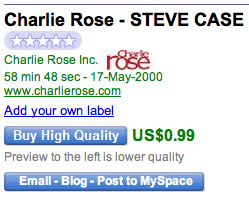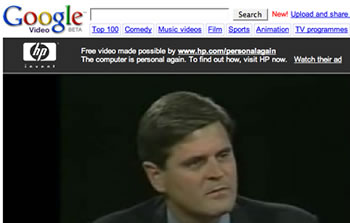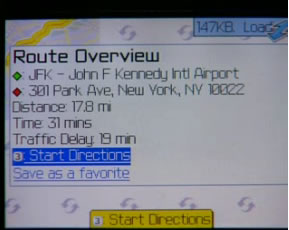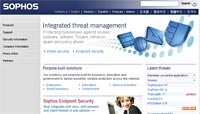 To a long, long fanfare that we began to fear would never end, Top of the Pops, the world’s longest-running weekly music show, was finally killed off last night.
To a long, long fanfare that we began to fear would never end, Top of the Pops, the world’s longest-running weekly music show, was finally killed off last night.
A classic example of how the Internet is changing consumer’s habits, the once High Priest of Pop found its viewers tumbling as music fans flocked to the Web for the latest tunes, news and videos.
Despite being a major landmark on the UK music map for what seems like centuries, a new generation of impatient, tech-savvy and Web-connected listeners were hardly likely to warm to a format that only offered a distilled breakdown of chart acts once a week.
Why wait?
Way back when we were lads, music delivery on demand wasn’t quite the slick operation it is now, with music starved teens reduced to hanging about in smelly phone boxes, dialling ‘160’ and shoving in their 2p’s to hear a crackly rendition of the song of the day (which you hoped wasn’t the Wombles).
But kids today – spoilt rotten!
Thanks to the Internet, music lovers can now instantly gorge themselves on zillions of new tunes through social networking sites like MySpace, immerse themselves in vast oceans of songs on pay-per-download sites like iTunes or smuggle in tune booty from pirate sites like SoulSeek.
With this kind of personal music delivery, the days of families sitting around the gogglebox for a weekly fix of pre-programmed music entertainment are long gone, with music fans able to listen to music whenever they feel like it, via their computers, mobile phones, iPods and media players.
 The figures back up the story too, with a recent survey revealing that people spend longer on the Internet than watching television, with the audience for Top of the Pops crashing to around a million viewers from its once-lofty peak of more than 15 million.
The figures back up the story too, with a recent survey revealing that people spend longer on the Internet than watching television, with the audience for Top of the Pops crashing to around a million viewers from its once-lofty peak of more than 15 million.
MTV
Meanwhile MTV are still battling on with the launch of a community-style site at MTV.co.uk followed by a new channel called Flux which will let viewers control what is aired on the station, and offer live chat with other users
Aimed at challenging the big-boy social networking sites like MySpace and Bebo, MTV are hoping their new product will appeal to the wired generation.
Angel Gambino, vice president of commercial strategy and digital media at MTV Networks UK & Ireland told Reuters, “If audiences are spending more time away from the TV it is important for us to make sure we have a really compelling product.”
“It’s critical to our success to make that transition from a broadcasting company to a multiplatform media company,” she added.
Whether MTV’s new interactive TV service will manage to make inroads into a music market increasingly driven by the Internet remains to be seen, but it’s clear that traditional heavyweights like record labels and MTV are very unlikely to enjoy the domination enjoyed in the past.
 We’ve just published a
We’ve just published a  When it comes to web searches, Google still remains the world champ, with the latest figures showing that the search giant had notched up nearly half of all web searches last month.
When it comes to web searches, Google still remains the world champ, with the latest figures showing that the search giant had notched up nearly half of all web searches last month. Although Ask.com and My Way managed to score year-on-year growth of 66 per cent and 51 per cent respectively, the search sites only account for a mere two per cent of all searches in June.
Although Ask.com and My Way managed to score year-on-year growth of 66 per cent and 51 per cent respectively, the search sites only account for a mere two per cent of all searches in June. Looking to scoop up some late summer sales action is Casio’s new Exilim Zoom EX-Z700 digital camera, available in silver and gunmetal.
Looking to scoop up some late summer sales action is Casio’s new Exilim Zoom EX-Z700 digital camera, available in silver and gunmetal. Cheese FX
Cheese FX Pentax have announced their new ultra-compact Optio S7 camera which features a seven megapixel sensor with high sensitivity up to ISO 1600 (at 4 mp).Released almost a year after their popular Optio S6 model, the camera upgrade features Pentax’s “Face Recognition AF & AE”, a 2.5″ non-glare LCD monitor, DivX Movie Mode and support for the new SDHC card format.
Pentax have announced their new ultra-compact Optio S7 camera which features a seven megapixel sensor with high sensitivity up to ISO 1600 (at 4 mp).Released almost a year after their popular Optio S6 model, the camera upgrade features Pentax’s “Face Recognition AF & AE”, a 2.5″ non-glare LCD monitor, DivX Movie Mode and support for the new SDHC card format. This ramps the ISO up to 1600, letting the Optio take advantage of faster shutter speeds in low light situations, but at the expense of image size, with the resolution slipping down to 4 MB (2304 x 1728 pixels).
This ramps the ISO up to 1600, letting the Optio take advantage of faster shutter speeds in low light situations, but at the expense of image size, with the resolution slipping down to 4 MB (2304 x 1728 pixels). There’s also a movie anti-shake feature, although this will give users a narrower field of view than during normal recording.
There’s also a movie anti-shake feature, although this will give users a narrower field of view than during normal recording. Google Video has been serving videos to the Internet population for over a year and a half now, both
Google Video has been serving videos to the Internet population for over a year and a half now, both  Clicking on Watch their Ad link opens a new browser session and plays the video advert from … Google Video. All very neat.
Clicking on Watch their Ad link opens a new browser session and plays the video advert from … Google Video. All very neat. The ever-expanding selection of Google features just grew by one as they announce that they’re providing Live Traffic updates to mobile phones in 30 US cities and partial information in many others.
The ever-expanding selection of Google features just grew by one as they announce that they’re providing Live Traffic updates to mobile phones in 30 US cities and partial information in many others. Google are slightly playing catchup with Yahoo on this one, as they been plotting live traffic on Yahoo Maps since March 2005.
Google are slightly playing catchup with Yahoo on this one, as they been plotting live traffic on Yahoo Maps since March 2005. On the back of the Mobile Maps news, Google also announced that users now have the ability to customize the content that appears on the mobile version of their Personalized Homepage, making it even easier for mobile phone users to quickly get the information they need when away from their computers.
On the back of the Mobile Maps news, Google also announced that users now have the ability to customize the content that appears on the mobile version of their Personalized Homepage, making it even easier for mobile phone users to quickly get the information they need when away from their computers. Once again, America remains firmly rooted to the top of the league of spam-relaying nations, accounting for a hefty 23.2 per cent of the world’s unsolicited email during the second quarter of 2006
Once again, America remains firmly rooted to the top of the league of spam-relaying nations, accounting for a hefty 23.2 per cent of the world’s unsolicited email during the second quarter of 2006 Embedded spam
Embedded spam It’s not just computer programming and call centres that are being outsourced to India, it now appears that advertising and research on advertiser-funded programming is moving there too.
It’s not just computer programming and call centres that are being outsourced to India, it now appears that advertising and research on advertiser-funded programming is moving there too. Lodestar Universal CEO Shashi Sinha told
Lodestar Universal CEO Shashi Sinha told  The Murdoch empire continues to buy to part of the online world, as BSkyB announce the full purchase of Web publishing and design company, mykindaplace, a company that they’d invested in 2000 when they previously dabbled in buying bits of the Internet.
The Murdoch empire continues to buy to part of the online world, as BSkyB announce the full purchase of Web publishing and design company, mykindaplace, a company that they’d invested in 2000 when they previously dabbled in buying bits of the Internet. James Baker, Managing Director of Sky Networked Media, who will have the mykindaplace teams under his power, invented a new term to us “super-serve,” when he said “Working even more closely with mykindaplace will allow us to accelerate the expansion of our web portfolio. We intend to super-serve audiences in key content genres and target new users with a suite of content-rich sites thatdeepen customer relationships and drive new revenue.”
James Baker, Managing Director of Sky Networked Media, who will have the mykindaplace teams under his power, invented a new term to us “super-serve,” when he said “Working even more closely with mykindaplace will allow us to accelerate the expansion of our web portfolio. We intend to super-serve audiences in key content genres and target new users with a suite of content-rich sites thatdeepen customer relationships and drive new revenue.”